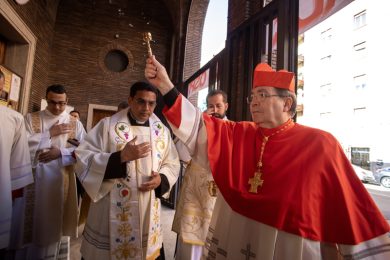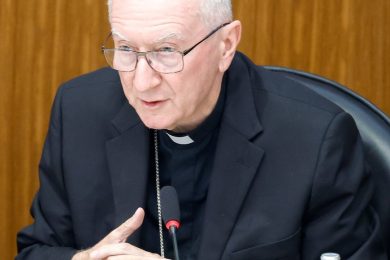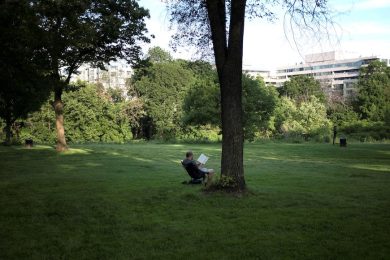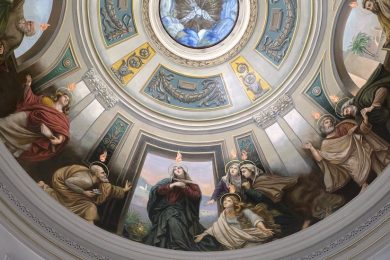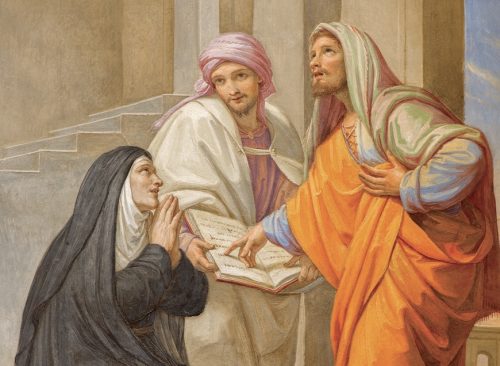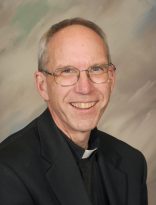
“HOW ARE THINGS GOING FOR YOU?”
“JUST LIVING THE DREAM.”
That exchange has been in our cultural vocabulary for a few decades now. “Living the dream” might express deep satisfaction with achieving one’s goals in life: perhaps a fulfilling career, comfortable retirement, financial security, positive relationships, hopeful opportunities. It might also be said ironically when life is marked with frustrations, obstacles and problems.
Mona and Pat’s son certainly seemed to be living the dream by the world’s standards. He had a brilliant and quick mind, a successful teaching career, all the cash he needed. He was handsome, popular and made friends readily. His popularity created some awkward moments, too, having to decide whether to leave one mistress for the next and how to be responsible for a son born of one of those relationships.
While this 20-something had every human mark of success, wealth and influence, none of this satisfied him. He felt an emptiness and knew he wanted something more. Although he didn’t know what that missing piece was, he was certain it was not his mother’s Christian beliefs. Surely, he thought, if there is divine and eternal truth, it must be complex, hidden, accessible only to the greatest minds. But Christian faith was a set of ideas so simple and outdated that even a child could follow them.
I admit the poetic license with the names, but the facts are sound. This is St. Augustine, son of Patricius and Monica, and he tells his own story with rigorous honesty in his “Confessions.” The heart of his life’s search is recorded already in the timeless truth of its first paragraph: “You have made us for yourself, O Lord, and our hearts are restless, until they rest in You.” Even if you read no more, you would already have found the life-changing pearl of great price.
At the Rite of Election on the First Sunday of Lent, Bishop Patrick Neary commented that each one of the dozens of men and women who were preparing for the Easter sacraments has a story, an account of how God reached into their lives to call them to the life of faith and grace. Though their stories represent many different paths, it is the same Spirit at work today who called Mona and Pat’s son over 16 centuries ago. Augustine went from living the dream to living the mystery of God’s call.
Unlike “living the dream,” “mystagogy” is a word much less likely to pop up in conversation between innings or at the grocery store. Instead of living the dream, mystagogy implies learning about living the mystery — the mysteries of our faith.
In the Church’s rites, mystagogy refers to a period of postbaptismal prayer and progress, the third step in the process of incorporation into the body of Christ. The Rite of Christian Initiation states: “This is a time for the community and the neophytes [the newly baptized] together to grow in deepening their grasp of the Paschal Mystery and in making it part of their lives through meditation on the Gospel, sharing in the Eucharist, and doing the works of charity.”
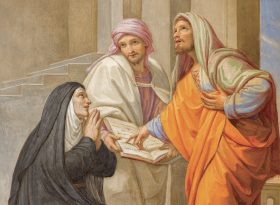
That outline may sound familiar, for it is parallel to the purpose of Lent and in fact to the entirety of the Christian life. No matter how long ago we were baptized, we are all continually called to meditate on the Scriptures, build our communion with God and one another through the Eucharist and live our faith actively in works of charity and service in imitation of Jesus, who came not to be served but to serve.
Lent has its roots in the catechumenate (the period of preparation for baptism). Those seeking to become part of the body of Christ through the sacraments spent the final 40 days in prayer, fasting and charitable works in conformity with the example of Jesus’ own 40 days in the desert. The rest of the Church joined them in solidarity and in the humble awareness that full conversion to the Gospel is a life-long process. As they looked forward to what baptism would bring them as sharers in God’s promise of salvation, so all of us look backward to the gift already given to us, that we might be renewed in what we once promised to and received from God.
Mystagogy is not simply those four to six sessions after the Easter Vigil for the newly baptized. It is the lifelong journey of every Christian, since we are “postbaptismal” ever after that first moment of sacramental grace.
Even in heaven, we will be doing mystagogy. We will forever be “deepening our grasp of the Paschal Mystery,” since God’s infinite mercy and love will always exceed our human comprehension, even in glory. We will meditate on the Gospel, not as mere words but in the endless presence of the Word himself. We will share in the Eucharist, no longer under the veil of the sacrament but wholly united in communion with the entire body of Christ, head and members. And we will live in perfect charity, no longer through deeds of mercy but sharing the love that is the very life of God.
Augustine commented that the 40 days of Lent are exceeded by the 50 days of Easter, since our time-bound trials and struggles here will pass and eternal joy in the risen Christ is to be our future. If that is our greatest hope and aspiration, we will finally be living the dream by living the mystery of God’s saving love in the fullness of joy.
—
Feature photo courtesy of Getty Images/sedmak.





